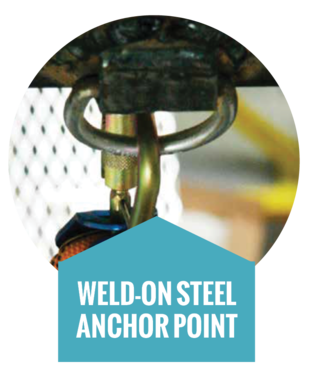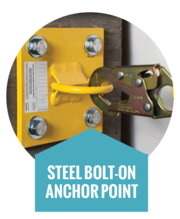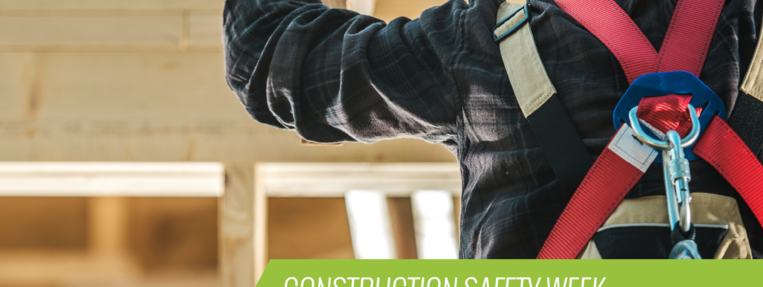We’ve Got Your Back
AHBL Provides Fall Protection Services
According to the Bureau of Labor Statistics (BLS), “falls account for 33% of all construction deaths[.] Eliminating falls in construction would save more than 300 lives every year.” In an effort to reduce construction site injuries related to falls, the Occupational Safety and Health Administration (OSHA) requires the use of fall protection when construction workers are working at heights of 6 feet or greater above a lower level. Additional precautions are enacted when working near dangerous equipment. What are some fall protection solutions?
Depending on the construction activity and work or maintenance environment, common solutions include increasing parapet heights, adding personal fall arrest anchor points or guardrail systems.
Examples of fall protection solutions:

 AHBL’s structural engineers have provided design guidance and evaluation related to general contractors’ fall protection plans and systems. Design services can be related to assessing the load capacity of a floor, wall or roof system to resist OSHA mandated fall arrest forces, selection of an appropriate fall protection anchor system (anchor point where construction workers “tie” directly to the building structure), as well as the layout and configuration of anchor points. AHBL’s structural engineers work closely with contractors to ensure that the building structure has framing members appropriately located and braced to accommodate fall protection considerations for building construction and maintenance.
AHBL’s structural engineers have provided design guidance and evaluation related to general contractors’ fall protection plans and systems. Design services can be related to assessing the load capacity of a floor, wall or roof system to resist OSHA mandated fall arrest forces, selection of an appropriate fall protection anchor system (anchor point where construction workers “tie” directly to the building structure), as well as the layout and configuration of anchor points. AHBL’s structural engineers work closely with contractors to ensure that the building structure has framing members appropriately located and braced to accommodate fall protection considerations for building construction and maintenance. 
This Construction Safety Week, AHBL wants to highlight the preventative planning and design services that can be applied to safety programs to foster a safe work environment for construction workers.
Note: The photos of fall protection solutions are used purely to illustrate different systems. AHBL specifies fall protection systems specific to the project and the appropriate maker/product.
Sources:
https://www.bigrentz.com/blog/construction-safety-statistics
https://www.osha.gov/sites/default/files/publications/OSHA3146.pdf
